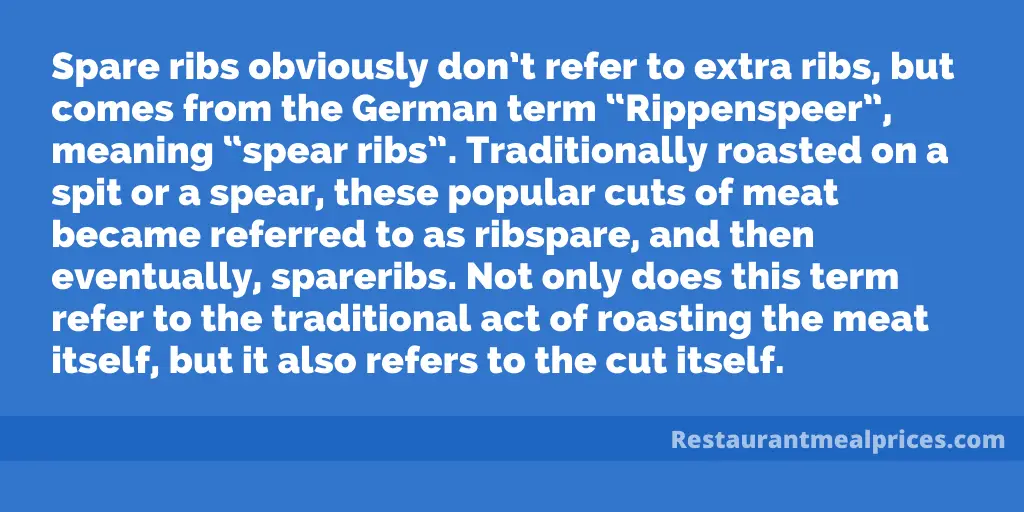While we all love our steak, we tend to forget about how delicious pork can be. When cut and cooked right, pork can be one of the tastiest slabs of meat around. But with all the available cuts of pork available, it can be hard to determine which is which, begging the common question, what exactly is the difference between pork baby back ribs and spareribs? In this article, we take a look at exactly what the difference is, and if both of these popular cuts of meat can be used interchangeably.
What are baby back ribs?
There’s no way you’ve heard the popular Chili’s baby back ribs song. Also referred to as loin ribs, or riblets, baby back ribs are small, easy to hold, and fall right off the bone (if they’re cooked right!). But what exactly are baby back ribs and what part of the pig are they taken from?
Eater.com gives us the lowdown on baby back ribs:
“Baby back ribs come from the parts of the ribs that are connected to the backbone, beneath the loin muscle, and are curved where they meet the spine. They’re called “babies” because they’re shorter than spare ribs; on the longest end, they’re around 6 inches, and they taper down to about 3 inches on the shorter end. Depending on how they’re butchered, they may have around half an inch of loin meat attached to the top. Baby back ribs are more tender and leaner than spare ribs and are typically more expensive. Each rack is around 2 pounds, around half of which is bone, and one rack feeds around one hungry adult.”
What are spare ribs?

Spare ribs obviously don’t refer to extra ribs, but comes from the German term “Rippenspeer”, meaning “spear ribs”. Traditionally roasted on a spit or a spear, these popular cuts of meat became referred to as ribspare, and then eventually, spareribs. Not only does this term refer to the traditional act of roasting the meat itself, but it also refers to the cut itself.
Fine Cooking tells us about the most popular cut of spare ribs:
“Those most commonly found in supermarkets are spareribs. The thicker and meatier ribs from the pork belly, they’re what’s leftover (or spare) after the bacon has been cut away. A full slab of spareribs consists of the front, or belly ends, of eleven ribs and the cartilage that connects the ribs to the breastbone. Many butchers remove the sternum portion and much of the connecting cartilage, leaving a narrower, better slab of ribs called a St. Louis cut. A slab of St. Louis spareribs weighs 2 to 3 pounds (smaller means more tender); each slab will feed two or three people.”
Can you substitute one type of rib for the other?
Now that we know that these cuts of meat are, in fact, completely different, can one really be substituted for the other? While each can easily be served with the same side dishes, both the size of the ribs and the time it takes to cook them need to be taken into consideration.
The Kitchn explains why you cannot directly substitute baby back ribs with spare ribs:
“Baby back ribs can be substituted for St. Louis-style spareribs, but since they are smaller, you will need about 1 1/2 times the amount of baby backs as St. Louis-style ribs. The larger size of the St. Louis-style ribs means that they take longer to cook, so note that baby back ribs take about 1 1/2 to 2 hours to cook at 300°F, but St. Louis ribs will take 2 1/2 to 3 hours.”
Want to see which of your favorite restaurants are serving up your preferred stack of ribs? Check out their menu here, or have a look at all restaurants to compare food menus.

